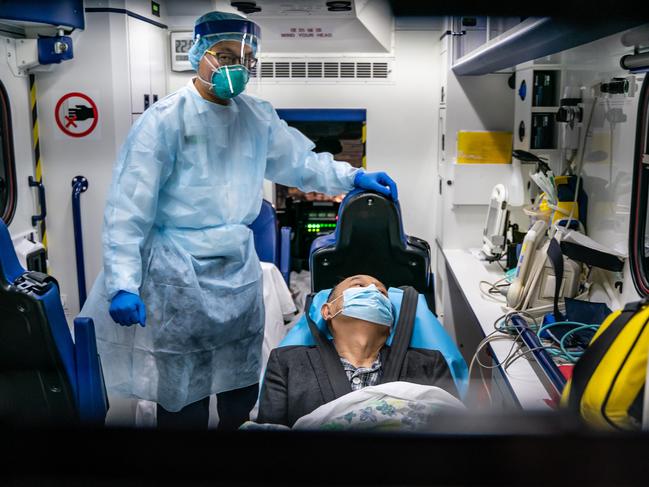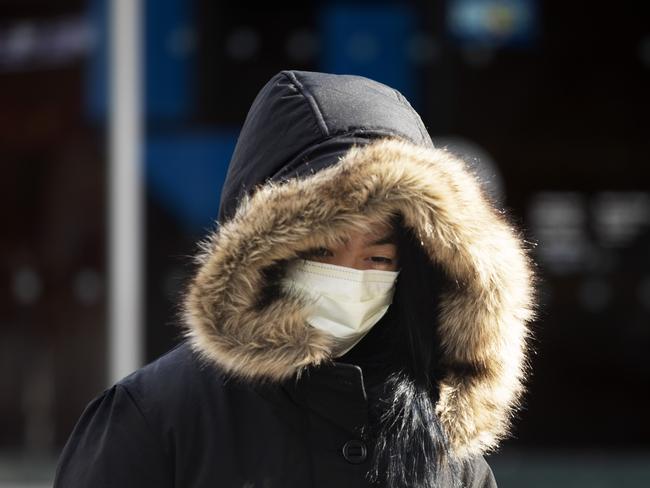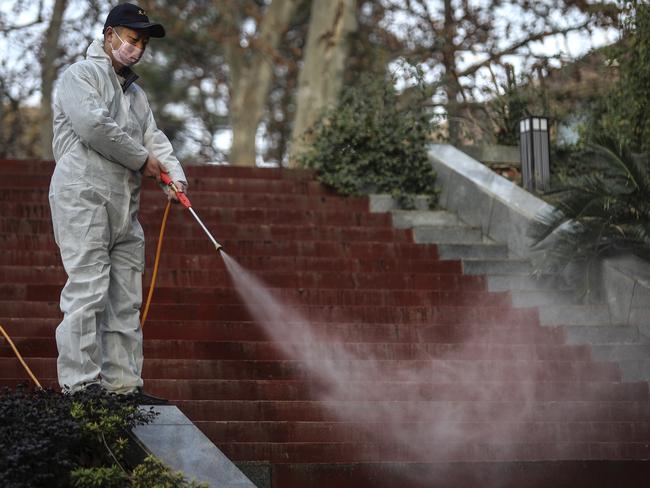Doctors are pushing for a single national body to control coronavirus
Every major western country has a centralised body that manages disease outbreaks. This week Australia had nine different bodies giving conflicting advice on combating coronavirus.
Health
Don't miss out on the headlines from Health. Followed categories will be added to My News.
- Qantas suspends flights to China after virus outbreak
- How the world is racing to fight the coronavirus
Australia’s ability to control the rampant Chinese coronavirus is being hampered because we don’t have a centralised infection control body like other major western countries says the AMA.
Their call for a centralised national co-ordinating centre for infectious disease is also being backed by the Australasian Society for Infectious Disease (ASID).
Australia’s fragmented approach was laid bare this week when some states and the federal government were supplying confusing and contradictory messages on whether children who had been to China recently should be allowed to attend school.

“The public gets confused and stressed out and they don’t know who to listen to,” said Professor Josh Davies the president of the Australasian Society for Infectious Diseases.
The US, China and Europe all have centralised bodies that co-ordinate responses to infectious outbreaks and the World Health Organisation prefers to deal with a single representative body in each nation in a crisis.

In Australia, however, we have nine levels of government all trying to co-ordinate responses- six states, two territories and the federal government.
In the last few weeks they have been holding separate daily press conferences updating the public on the illness.
“We’ve said for a long time the co-ordination and timing of activities and sharing of information during an epidemic it is necessary to have leadership in one place to share and receive information,” Australian Medical Association President Dr Tony Bartone told News Corp.

MORE
BUSHFIRE SMOKE LINKED TO RISE IN CARDIAC ARRESTS
THOUSANDS ‘OVER-DIAGNOSED’ WITH CANCER
Professor Davies said it had been lobbying the government for years for such a body but “the government hates it because the US Centre for Disease Control (CDC) is such a huge and expensive organisation”.
The model he prefers for Australia is that of the European Centre for Disease Prevention and Control which is an umbrella body for European governments and he also wants it to manage emerging antibiotic resistance to infections in Australia.
This model would be far less expensive and work with our existing infrastructure but act as an umbrella body overlaying it, he said.
Both Professor Davies and Dr Bartone say the government is so far doing a good job managing the coronavirus outbreak in Australia.
However Professor Davies says the recent outbreak of candida auris and antifungal resistant yeast that can enter the bloodstream and spread throughout the body showed the need for a CDC type body here.
“No-one knew how many cases there were,” he said.
In 2017, the Auditor-General found inadequacies when it investigated the Department of Health’s Coordination of Communicable Disease Emergencies including Meningococcal W, ebola and zika.

While these threats were controlled there had been issues of leadership and coordination in planning with separate guidelines done by multiple jurisdictions.
The federal Health Department’s website contained “out-of-date information, and does not always provide relevant information about communicable disease in a timely manner”, the report said.
“Health has addressed or partially addressed approximately half of the relevant recommendations and lessons learnt from five recent reviews relating to communicable disease emergencies,” it found.

A spokesman for Greg Hunt said the World Health Organisation had identified Australia as “one of the most well prepared health systems in the world, according to a 2018 evaluation report on Australia disaster preparedness”.
Australia had a disease control framework in the form of the Communicable Diseases Network Australia (CDNA) set up in 1989, he said.
“The CDNA is supported by the Australian Health Protection Principal Committee (AHPPC), which provides overarching national leadership through cross-jurisdictional collaboration on health protection matters. AUSMAT teams also play a significant role in Australia’s disease control response,” he said.

“Minister Hunt is profoundly committed to maintaining Australia’s reputation as a world-leader when it comes to disease control, and protecting the health and wellbeing of all Australians.”
